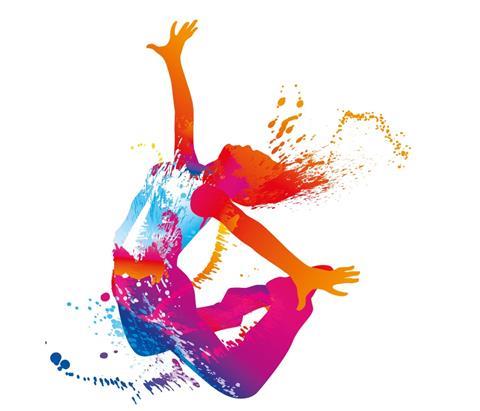Accedo’s regional director - Australia & New Zealand Chris McNair believes the future of sports viewing lies with VR/AR

Sports is an interesting battleground for TV viewership. While OTT technology provides a fundamental threat to the traditional broadcast model, sports is not as straightforward, as it has to be live.
That doesn’t mean it has to be a linear experience. As the battleground takes shape over the coming months, new, exciting and most of all interactive experiences will come to market, and innovation will become all the more crucial in defining the winners.
The Fight for Rights
Many predict players like Hulu, Amazon and Netflix will be looking to gain valuable rights to major sporting events. But, for the big, global sports, rights are very complex, having often been tied up for many years by larger pay TV providers and sometimes with multiple rights holders. If the OTT providers were to go for this market, it would be very expensive and doesn’t seem a feasible widespread option at this stage.
What we will see instead is some experiments with lower cost, low-to-mid tier sports and leagues, with several years before anyone goes all in at buying rights. With those sports, the OTT providers will also be experimenting with delivering a much more interactive and engaging experience and they have the technology to play with.
This, plus the growing threat for future sports, means that traditional broadcasters will increasingly be looking to justify the cost of sports coverage to be competitive. This means we will start to see added enhancements to the major sports as the traditional rights holders struggle to keep up, which will be extremely beneficial for consumers.
Virtual Reality
Virtual Reality (VR) is one of the obvious ways of improving the user experience for consumers. However, it is still in its infancy and has a long way to go to be truly attractive. If you were to ask a consumer if they want VR, I believe most would say yes. However, when they test it out, they often find it clunky and real world usage is lacking.
As such, right now VR has limited use cases in real world scenarios, with most people’s exposure being relegated to trade shows, mall demos and that one bleeding edge friend with a PSVR setup or an Oculus Rift kit in their dungeon.
One of the main reasons for this inaccessibility is the weight and size of the hardware and the necessary processing power required to produce a truly immersive experience.
Many are predicting that VR will go the same way as 3D, but there is one fundamental difference in VR’s favour. The main problem with 3D was high production costs and the fact it could cause nausea. With VR, we have the possibility to create low-cost VR with 360º video.
Yes, it is no match for the fidelity and capability of the more cumbersome, but undeniably more impressive, space helmets built specifically to deliver virtual reality. It does however mean that even if only 1% of the audience wants VR, there is enough of a business case for doing so and I think we will see some real world examples this year.
Mostly these have been experimental so far and often on the lower value sports where there is less of a rights minefield.
Imagine watching a sports game on a plane, being in the crowd, and forgetting that you have no leg room and an inedible meal. The same goes for a bus, train or any other lengthy trip in a confined space.
We are already beginning to see some interesting sports use cases already. Earlier this year, we teamed up with HTC Vive [VR headset] to work with the Australian National Basketball League (NBL) to create some pretty exciting VR user experiences. As a sport which attracts more than 750,000 spectators each season, as well as prime-time TV audiences, it is certainly a good test case to see how the VR environment works out.
Augmented Reality
That aside, the one thing we have to remember with sports is that it is mostly a social experience. Most of my personal sport consumption is undertaken in groups, with snacks and alcoholic lubricants, and this is not an ideally suited alignment with a plastic monolith worn upon one’s head.
I believe that as the technology miniaturises, VR is going to hit its stride, merging with its less sexy cousin, Augmented Reality (AR), to become something much more communal, adding interaction and engagement without putting up social barriers.
AR enables you to augment something you see in the real world with additional information or experiences. Although the technology has been there for several years, it is only in the last few years that client device technology has been good or cheap enough to be applicable for real consumer applications. Now, however we are reaching a point where it is good enough and sports is in particular a great use case here.
Imagine being able to access additional information via a second screen device and interact with that like never before. For example, you might be watching a match whilst simultaneously interacting with player statistics, group rankings and so on, on your device.
The Perfect Match
I believe the holy grail will be in combining VR with AR. Imagine a group of friends, watching a huge sporting event like the Superbowl together, around a table wearing glasses, with a user interface managed simply by gestures and eye movement. Everyone watching the same action, in their own way, but still able to discuss, engage and curse the ref with like-minded souls.
The future is bright for AR/VR, and over the next few years these services will become mainstream.
The important thing for content companies is to be there early, exploring the best ways to present experiences to the user, without limiting interactions with those around them. Gathering and applying those learnings will allow content companies to capitalise early, and cement their position in this emerging and exciting market.

Chris McNair is regional director - Australia & New Zealand at Accedo





























No comments yet